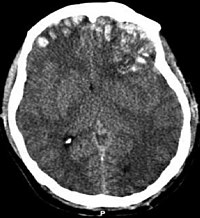
Reconstruction of phthalate exposure and DINCH metabolites from biomonitoring data from the EXHES cohort of Tarragona, Spain: A case study on estimated vs reconstructed DEHP using the PBPK model.
Sign Up to like & getrecommendations! Published in 2020 at "Environmental research"
DOI: 10.1016/j.envres.2020.109534
Abstract: Phthalates are known endocrine disruptors (EDs) and are associated with potential diseases, such as obesity and diabetes. In 2002, the plasticizer 1,2-cyclohexane dicarboxylic acid diisononyl ester (DINCH) was introduced as an alternative to phthalates in… read more here.
Keywords: pbpk model; phthalate; dinch metabolites; exposure ... See more keywords

Development and Qualification of a Physiologically Based Pharmacokinetic Model of Finasteride and Minoxidil Following Scalp Application.
Sign Up to like & getrecommendations! Published in 2021 at "Journal of pharmaceutical sciences"
DOI: 10.1016/j.xphs.2021.02.016
Abstract: In this study, we aimed to develop and qualify a PBPK model for scalp application using two drugs with marked differences in physicochemical properties and PK profiles. The parameters related to scalp physiology, drug PK,… read more here.
Keywords: following scalp; model; model finasteride; scalp application ... See more keywords

Use of a probabilistic PBPK/PD model to calculate Data Derived Extrapolation Factors for chlorpyrifos
Sign Up to like & getrecommendations! Published in 2017 at "Regulatory Toxicology and Pharmacology"
DOI: 10.1016/j.yrtph.2017.02.014
Abstract: &NA; A physiologically based pharmacokinetic and pharmacodynamic (PBPK/PD) model combined with Monte Carlo analysis of inter‐individual variation was used to assess the effects of the insecticide, chlorpyrifos and its active metabolite, chlorpyrifos oxon in humans.… read more here.
Keywords: biochemistry; data derived; extrapolation factors; derived extrapolation ... See more keywords

Bayesian Refinement of the Permeability-Limited Physiologically Based Pharmacokinetic Model for Perfluorooctanoic Acid in Male Rats.
Sign Up to like & getrecommendations! Published in 2021 at "Chemical research in toxicology"
DOI: 10.1021/acs.chemrestox.1c00193
Abstract: Physiologically based pharmacokinetic (PBPK) modeling is a powerful technique to inform risk assessment of xenobiotic substances such as perfluorooctanoic acid (PFOA). In our previous study, a permeability-limited PBPK model was developed to simulate the toxicokinetics… read more here.
Keywords: based pharmacokinetic; permeability limited; physiologically based; permeability ... See more keywords

A comprehensive physiologically based pharmacokinetic (PBPK) model for nicotine in humans from using nicotine-containing products with different routes of exposure
Sign Up to like & getrecommendations! Published in 2022 at "Scientific Reports"
DOI: 10.1038/s41598-022-05108-y
Abstract: Physiologically based pharmacokinetic (PBPK) modeling can be a useful tool for characterizing nicotine pharmacokinetics (PK) from use of tobacco products. We expand a previously published PBPK model to simulate a nicotine PK profile, following single… read more here.
Keywords: pharmacokinetic pbpk; pbpk model; based pharmacokinetic; model ... See more keywords

Predicting Resolvin D1 Pharmacokinetics in Humans with Physiologically‐Based Pharmacokinetic Modeling
Sign Up to like & getrecommendations! Published in 2020 at "Clinical and Translational Science"
DOI: 10.1111/cts.12930
Abstract: Sjögren’s syndrome (SS) is an autoimmune disease with no effective treatment options. Resolvin D1 (RvD1) belongs to a class of lipid‐based specialized pro‐resolving mediators that showed efficacy in preclinical models of SS. We developed a… read more here.
Keywords: based pharmacokinetic; predicting resolvin; physiologically based; model ... See more keywords

Application of a PBPK model to elucidate the changes of systemic and liver exposures for rosuvastatin, carotegrast, and bromfenac followed by OATP inhibition in monkeys
Sign Up to like & getrecommendations! Published in 2021 at "Clinical and Translational Science"
DOI: 10.1111/cts.13047
Abstract: The impact of organic anion‐transporting polypeptide (OATP) inhibition on systemic and liver exposures of three OATP substrates was investigated in cynomolgus monkeys. A monkey physiologically‐based pharmacokinetic (PBPK) model was constructed to describe the exposure changes… read more here.
Keywords: inhibition; exposure; liver; model ... See more keywords

Application of Physiologically Based Pharmacokinetic Modeling in Understanding Bosutinib Drug-Drug Interactions: Importance of Intestinal P-Glycoprotein
Sign Up to like & getrecommendations! Published in 2018 at "Drug Metabolism and Disposition"
DOI: 10.1124/dmd.118.080424
Abstract: Bosutinib is an orally available Src/Abl tyrosine kinase inhibitor indicated for the treatment of patients with Ph+ chronic myelogenous leukemia at a clinically recommended dose of 500 mg once daily. Clinical results indicated that increases… read more here.
Keywords: physiologically based; drug; bosutinib; pbpk model ... See more keywords

Physiologically Based Pharmacokinetic Modeling of Vitamin D3 and Metabolites in Vitamin D–Insufficient Patients
Sign Up to like & getrecommendations! Published in 2022 at "Drug Metabolism and Disposition"
DOI: 10.1124/dmd.121.000609
Abstract: A physiologically based pharmacokinetic (PBPK) model of vitamin D3 and metabolites [25(OH)D3, 1,25(OH)2D3, and 24,25(OH)2D3] is presented. In this study, patients with 25(OH)D3 plasma concentrations below 30 ng/ml were studied after a single dose of… read more here.
Keywords: physiologically based; based pharmacokinetic; vitamin metabolites; pbpk model ... See more keywords

O19 Development of a paediatric brain PBPK model in children with and without meningitis
Sign Up to like & getrecommendations! Published in 2019 at "Archives of Disease in Childhood"
DOI: 10.1136/archdischild-2019-esdppp.19
Abstract: Background Several paediatric physiologically-based pharmacokinetic (PBPK) models have been developed that incorporate developmental changes affecting plasma drug concentrations. Disposition into cerebrospinal fluid (CSF) is also age-related and influenced by physiological factors, including CSF production rate,… read more here.
Keywords: meningitis; paediatric brain; model; pbpk model ... See more keywords

Development of Physiologically Based Pharmacokinetic Model and Assessment of the Impact of Renal Underdevelopment in Preterm Infants on the Pharmacokinetics of Aminophylline
Sign Up to like & getrecommendations! Published in 2022 at "Journal of Pharmacology and Pharmacotherapeutics"
DOI: 10.1177/0976500x221080209
Abstract: Objective: To develop a physiologically based pharmacokinetic (PBPK) model for individualization of the dosing regimen considering the physiological requirements of these preterm neonates. Methods: The study comprised preterm newborns with fewer than 34 weeks of… read more here.
Keywords: pbpk model; renal underdevelopment; based pharmacokinetic; preterm ... See more keywords